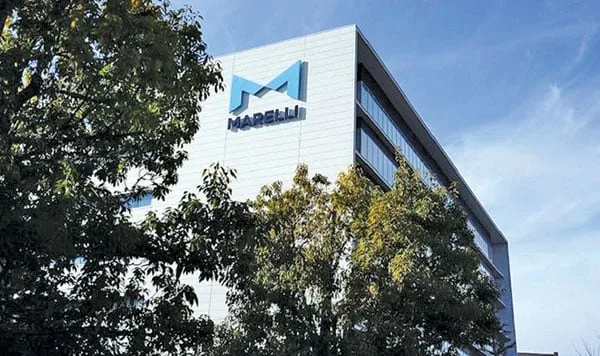As of June 12, 2025, Marelli Holdings Co. Ltd., a prominent Japanese auto parts supplier owned by KKR & Co., has filed for Marelli Chapter 11 bankruptcy protection in the United States. This strategic move aims to facilitate a comprehensive financial restructuring, allowing Marelli to address its significant debt burden and continue operations while exploring new ownership arrangements.

Key Factors Leading to Marelli Chapter 11 Filing
1. High Debt Load from 2019 Merger
In 2019, KKR merged its Calsonic Kansei unit with Fiat Chrysler’s Magneti Marelli, creating Marelli. This merger resulted in a substantial debt load, which became increasingly difficult to manage as the company faced operational challenges. Despite efforts to restructure and reduce debt, Marelli continued to struggle financially.
2. Impact of Trade Tariffs
The imposition of tariffs, particularly by the Trump administration in March 2025, severely impacted Marelli’s operations. As an import/export-focused business, the tariffs increased costs and disrupted supply chains, exacerbating the company’s financial difficulties.
3. Supply Chain Disruptions
The COVID-19 pandemic led to significant supply chain disruptions, limiting access to raw materials and labor. Additionally, ongoing semiconductor shortages hampered production capabilities, further straining Marelli’s operations.
4. Declining Demand for Electric Vehicles
Marelli had invested heavily in components for electric vehicles (EVs). However, declining consumer demand for EVs led major automakers to scale back orders, reducing revenue opportunities for suppliers like Marelli.
5. Previous Restructuring Efforts
Prior to the Chapter 11 filing, Marelli underwent a court-led rehabilitation in Japan in 2022 to address its financial challenges. While this restructuring helped reduce debt, it was insufficient to resolve the company’s ongoing financial issues, leading to the decision to file for bankruptcy protection.
Financial Challenges and Restructuring Efforts
Marelli’s financial difficulties trace back to its formation in 2019, when KKR merged Calsonic Kansei with Fiat Chrysler’s Magneti Marelli. The combined entity inherited substantial debt, and subsequent challenges including the COVID-19 pandemic, semiconductor shortages, and shifting automotive industry dynamics exacerbated its financial strain. In 2022, Marelli initiated a capital restructuring plan, which included debt reduction and new equity investment from KKR, aiming to stabilize the company’s financial position. Despite these efforts, the company continued to face operational and financial hurdles.(Marelli Chapter 11)
The recent Chapter 11 filing reflects ongoing financial pressures and a working capital gap. Marelli has secured $1.1 billion in debtor-in-possession financing from lenders led by hedge fund Strategic Value Partners (SVP), positioning these lenders to potentially take control of the company through the restructuring process.(Marelli Chapter 11)
Strategic Implications and Stakeholder Dynamics
The bankruptcy filing marks a significant shift in control, with hedge funds assuming a more prominent role in the restructuring process. This development underscores the complex interplay between private equity ownership, creditor interests, and operational continuity. Notably, Japanese lenders such as Mizuho Bank, which had previously been involved in Marelli’s financing, are now navigating the implications of the company’s restructuring in a U.S. legal context.(Marelli Chapter 11)
Marelli’s major customers, including Nissan and Stellantis, have expressed support for the company’s efforts to avoid supply disruptions. Nissan, in particular, has pledged to collaborate with Marelli and other suppliers to stabilize the supply chain during this transitional period.
Outlook and Future Prospects
The restructuring process is expected to unfold over the coming months, with a 45-day overbid period following the initial financing arrangement. During this time, other potential buyers may submit competing offers, potentially altering the trajectory of Marelli’s ownership and operational strategy. The outcome of this process will significantly influence Marelli’s position in the global automotive supply chain and its ability to adapt to evolving industry trends, including the shift toward electric vehicles and advancements in automotive technology.(Marelli Chapter 11)
In summary, Marelli’s Chapter 11 filing represents a pivotal moment in the company’s history, reflecting broader challenges within the automotive supply sector and the complexities of managing substantial debt in a rapidly changing industry landscape. The unfolding restructuring process will be closely watched by stakeholders across the automotive and financial sectors.
Thanks For Read Marelli Chapter 11 this news.
